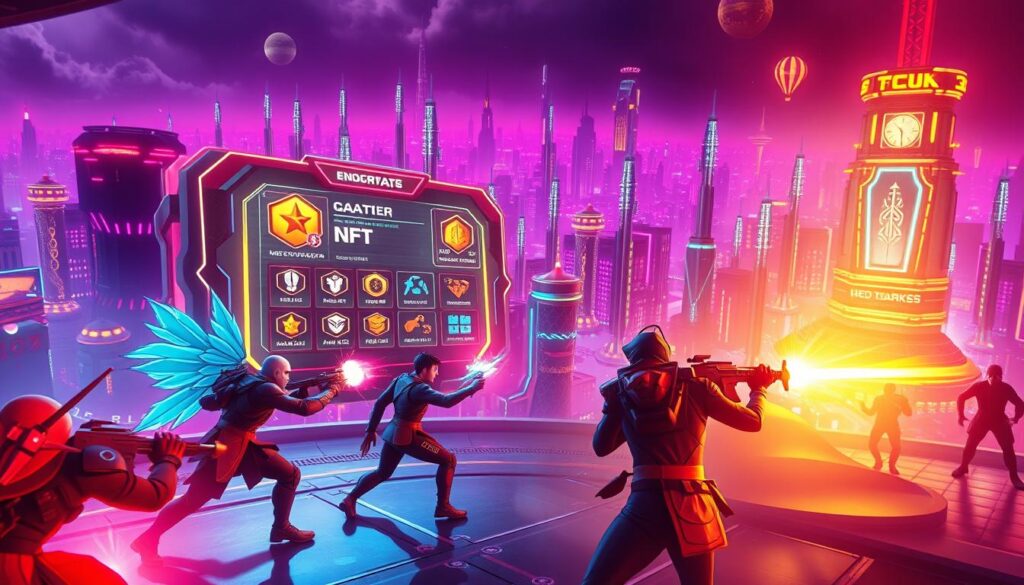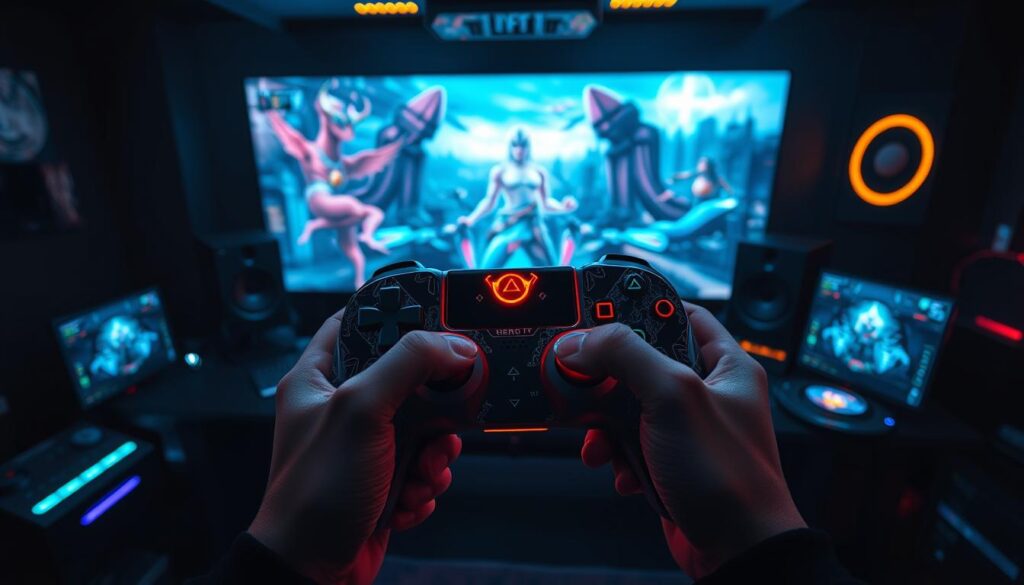Now Reading: Discover How to Earn Money Playing NFT Based Games Effectively
- 01
Discover How to Earn Money Playing NFT Based Games Effectively
Discover How to Earn Money Playing NFT Based Games Effectively
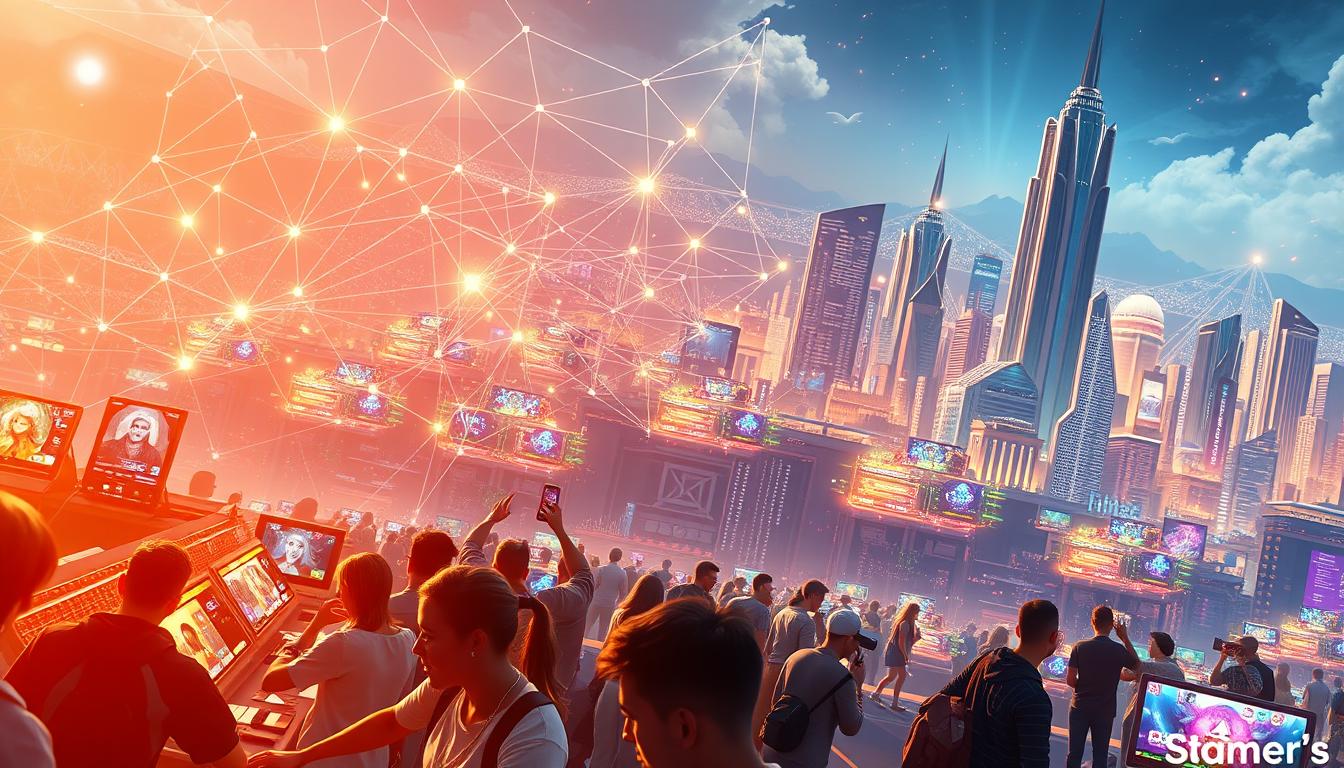
Blockchain technology is reshaping digital entertainment, creating vibrant virtual worlds where players own and control their in-game assets. Unlike traditional gaming models, these ecosystems allow users to monetize their time and skills through decentralized ownership. The rise of crypto-powered platforms has turned gaming into a global marketplace, with rare items and virtual land trading for real-world value.
Players now participate in immersive economies where every action can translate into tangible rewards. From breeding unique characters to leasing digital properties, opportunities abound for those willing to learn the rules of this new frontier. The sector’s rapid growth attracts both casual enthusiasts and professional traders, blending entertainment with financial potential.
This guide breaks down the mechanics behind successful participation in blockchain-powered entertainment. We’ll examine proven methods for capitalizing on digital scarcity and player-driven markets. Whether you’re exploring casual gameplay or competitive tournaments, understanding these systems opens doors to consistent earning possibilities.
Key Takeaways
- Blockchain technology enables true ownership of in-game assets
- Virtual economies create multiple income streams for players
- Skill development impacts earning potential across game types
- Market trends favor early adopters in growing platforms
- Asset liquidity differs significantly between gaming ecosystems
Introduction to NFT Gaming and Its Evolving Landscape
The gaming world is undergoing a seismic shift as decentralized technologies redefine player interactions. Traditional models, where progress vanishes when servers shut down, now compete with persistent virtual economies built on blockchain infrastructure. This evolution empowers participants through verifiable ownership of characters, items, and land.
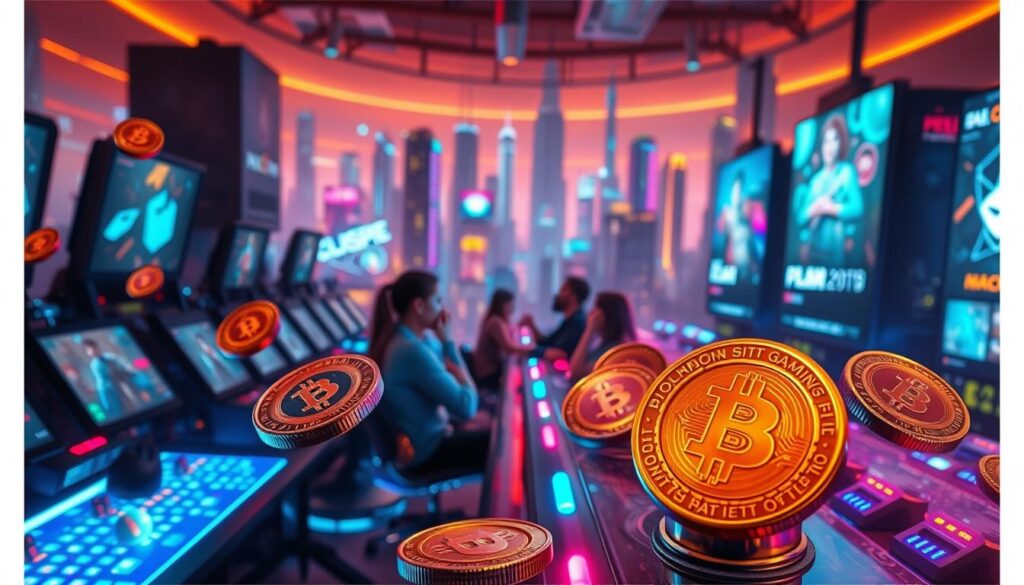
The Rise of Digital Ownership and Blockchain
Decentralized networks like Ethereum and Solana provide the backbone for digital assets that persist beyond individual titles. Players collect unique in-game items recorded as NFTs on public ledgers. These tokens act as permanent proof of possession, enabling cross-platform trading and usage.
Smart contracts automate complex transactions without intermediaries. This technology ensures fair distribution of rare items and transparent reward systems. Game developers now build ecosystems where community contributions directly influence economic rules.
Current Trends in NFT and Crypto Games
Mobile-first designs dominate new releases, with 63% of crypto games prioritizing smartphone accessibility. Cross-chain protocols let users transfer assets between networks like Polygon and Avalanche. Layer 2 solutions eliminate transaction fees, lowering entry barriers for casual participants.
Artificial intelligence enhances gameplay through adaptive NPCs and dynamic storytelling. Staking mechanisms allow players to generate passive income from idle NFTs. These innovations create layered economies where strategic decisions yield compounding rewards.
Understanding How to Earn Money Playing NFT Based Games
Modern interactive entertainment now offers economic participation through decentralized systems. Unlike conventional titles where progress disappears, blockchain-powered experiences let participants retain permanent ownership of their achievements. This fundamental shift creates sustainable opportunities for dedicated enthusiasts.

Defining Interactive Asset Economies
Digital collectibles in these ecosystems function as verifiable property through blockchain records. Players obtain rare items or characters as tradeable tokens, with scarcity enforced by smart contracts. These systems transform virtual accomplishments into liquid assets with marketplace value.
Reward Generation Frameworks
Activity-based compensation models drive engagement across platforms. Daily challenges might yield tradable tokens, while competitive victories unlock exclusive NFTs. Staking mechanisms allow asset holders to generate passive returns through network participation.
Community governance often plays a role in shaping economic rules. Token holders vote on feature updates or reward adjustments, creating collaborative ecosystems. Cross-platform compatibility lets users transfer assets between compatible titles, multiplying utility.
Strategic gameplay combines skill development with market awareness. Tracking token valuations and NFT rarity tiers helps optimize participation timing. Successful participants balance entertainment preferences with economic analysis to maximize returns.
The Benefits of NFT In-Game Assets for Modern Gamers
Digital collectibles are rewriting the rules of virtual engagement, granting unprecedented authority over digital possessions. Unlike traditional systems where progress vanishes upon server shutdowns, blockchain-backed items persist as permanent property. This shift empowers enthusiasts to build lasting value through strategic participation.
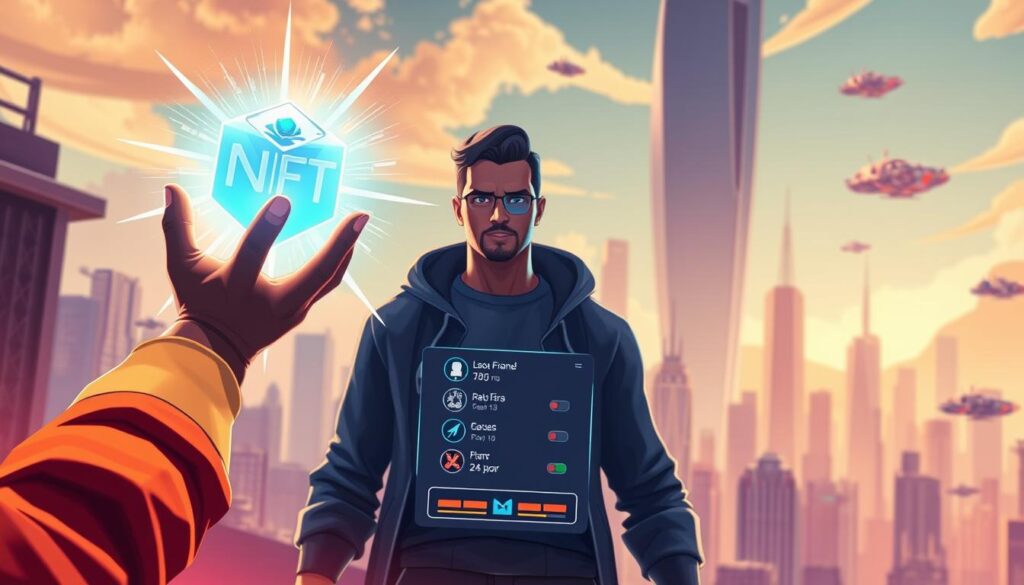
True Ownership and Asset Control
Players now command full authority over their virtual items. Earned swords, skins, or characters become transferable assets rather than temporary unlocks. Blockchain records act as immutable proof of possession, enabling cross-platform usage or marketplace trading without restrictions.
Transparent and Secure Transaction Systems
Smart contracts automate peer-to-peer exchanges with cryptographic precision. Every sale or trade leaves an unalterable ledger entry, eliminating fraud risks. These systems remove middlemen, slashing fees while accelerating transactions to near-instant speeds.
Value appreciation transforms virtual items into investment vehicles. Rare in-game assets often gain worth as communities grow, rewarding early adopters. Players diversify portfolios by holding digital items alongside traditional investments.
Cross-game compatibility amplifies utility. A helmet earned in one title might unlock special abilities elsewhere. This interoperability creates fluid economies where players dictate value through supply-demand dynamics across multiple platforms.
Comparing Free-to-Play and Play-to-Earn Models in NFT Games
Virtual gaming ecosystems now feature distinct economic models that cater to different participation levels. Free-to-play and play-to-earn frameworks dominate the landscape, each offering unique paths for engagement. Choosing between them depends on your goals, resources, and risk tolerance.
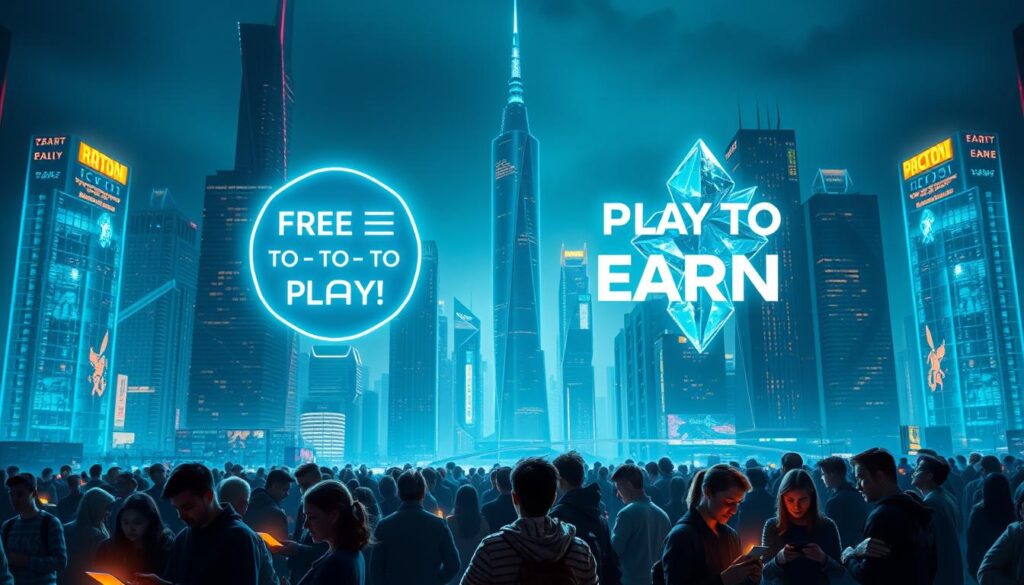
Overview of Free-to-Play NFT Games
Zero-cost entry titles like Gods Unchained attract casual enthusiasts. These platforms let users explore mechanics without financial commitments. While some offer basic rewards, most limit earning potential to encourage optional purchases.
Advantages include:
- Immediate access for skill testing
- Low-pressure learning environments
- Community-driven progression systems
Unlocking Revenue Potential with Play-to-Earn Modes
Premium experiences require initial investments in characters or tools. Titles like Axie Infinity reward skilled participants with tradeable tokens. Successful strategies combine gameplay mastery with market timing.
Key considerations:
- Upfront NFT acquisition costs
- Ongoing maintenance fees for assets
- Token volatility impacting returns
High-performing participants often diversify across multiple titles. This approach balances risks while maximizing exposure to growing ecosystems. Strategic asset management separates profitable enthusiasts from casual players.
Exploring Game Mechanics and Blockchain Integration
Advanced token systems form the backbone of interactive blockchain environments. These frameworks transform virtual interactions into measurable economic activities. Players engage with layered ecosystems where every action carries potential financial implications.
Tokenized In-Game Assets and Market Dynamics
Digital swords, characters, and virtual land become tradable tokens through blockchain verification. Each asset’s scarcity and utility determine its marketplace value. Decentralized exchanges enable 24/7 trading without centralized oversight.
Supply-demand balances shift based on player activity and platform updates. Rare items often appreciate as communities expand, creating investment opportunities. Real-time price tracking tools help participants make informed trading decisions.
Governance Tokens and Decentralized Economies
Platform-specific cryptocurrencies grant voting rights on feature development. Holders influence rule changes, reward structures, and ecosystem expansions. This participatory model aligns player interests with long-term platform success.
Many ecosystems use dual-token systems. Utility tokens power in-game transactions while governance tokens enable democratic decision-making. Staking mechanisms allow token holders to earn passive rewards through network participation.
Community proposals shape evolving mechanics, from battle systems to marketplace fees. Successful platforms balance developer vision with player feedback, creating adaptable economies. These collaborative environments foster loyalty while maintaining competitive dynamics.
Getting Started: Wallet Setup and Initial Investments
Building your foundation in blockchain gaming begins with secure digital tools and strategic planning. The right crypto wallet acts as your gateway to virtual economies, storing digital assets and enabling seamless transactions across platforms.
Selecting the Right Crypto Wallet for Gaming
Top wallets balance security with platform compatibility. Consider these options:
- MetaMask: Supports Ethereum-based games and Polygon network
- Phantom: Ideal for Solana-powered ecosystems
- Trust Wallet: Multi-chain access including BNB Chain
- Coinbase Wallet: User-friendly interface for beginners
Always verify official contract addresses when connecting to games. Browser extensions offer desktop convenience, while mobile apps enable on-the-go management.
Funding Your Wallet and Managing Gas Fees
Purchase ETH, BNB, or SOL through exchanges like Binance. Transfer funds to your wallet address, keeping 10-15% extra for transaction costs. Gas fees fluctuate based on network congestion – schedule transfers during off-peak hours for savings.
Security essentials:
- Store seed phrases offline in fireproof containers
- Enable two-factor authentication
- Use hardware wallets for large balances
Many platforms let you start with free starter packs, while others require acquiring digital assets upfront. Budget wisely, allocating funds between playable NFTs and reserve crypto for fees.
A Closer Look at Popular Crypto and NFT Game Platforms
Virtual worlds now host diverse ecosystems where strategic gameplay meets digital commerce. Leading platforms combine engaging mechanics with robust economic systems, attracting millions of global participants.
Key Features and Unique Selling Points
Axie Infinity remains a benchmark with its creature-breeding mechanics and dual-token rewards. Over one million daily users collect SLP tokens through battles, while AXS holders govern platform updates. Its scholarship program lets experienced players mentor newcomers, sharing profits.
Gods Unchained offers free entry to its trading card battles, with top-ranked competitors earning GODS tokens weekly. The platform’s 50,000+ active users trade cards freely, creating a thriving secondary market. Rare mythic cards sometimes sell for four-figure sums.
Metaverse builder The Sandbox empowers 200,000+ creators through voxel-based land development. SAND token earnings scale with parcel customization quality and visitor traffic. Successful estate owners generate monthly revenue rivaling physical rental properties.
Insights from Top Gaming Events and Funding Rounds
Recent Game Developers Conference panels highlighted Big Time‘s loot system, where action RPG enthusiasts secure rare cosmetic items. Early-access players report $50-$200 sales for exclusive gear. The studio’s $21 million Series A funding suggests long-term commitment to player-driven economies.
AAA-title Illuvium secured $12 million ahead of its open beta, with registrations surpassing 150,000. Its auto-battler format rewards strategic team compositions through weekly leaderboards. Top performers claim $100-$300 in ILV tokens, convertible to major cryptocurrencies.
Investment trends reveal growing confidence in hybrid entertainment models. The Sandbox’s $93 million SoftBank-backed round and Axie Infinity‘s $152 million valuation underscore institutional belief in sustainable virtual economies.
Effective Strategies to Maximize Your In-Game
Strategic participation in blockchain-powered gaming ecosystems requires balancing entertainment with economic awareness. Asset diversification proves crucial – spread investments across multiple titles to mitigate platform-specific risks. Track marketplace dynamics through dedicated analytics tools to identify undervalued items.
Seasoned participants prioritize games offering cross-platform interoperability. This allows transferring earned assets between ecosystems, amplifying utility. Regular engagement with developer roadmaps helps anticipate feature updates affecting asset values.
Community collaboration often unlocks hidden opportunities. Join guilds or scholarship programs to access shared resources and mentorship. Many platforms reward active contributors through NFT loyalty programs, boosting long-term earnings.
Time management separates casual players from serious participants. Allocate specific hours for competitive matches, marketplace analysis, and skill development. Pair gameplay sessions with real-time token price monitoring to optimize transaction timing.
Staking mechanisms let idle assets generate passive returns. Research each platform’s APY rates and lock-up periods before committing. Successful strategies blend technical mastery with psychological resilience against market fluctuations.


